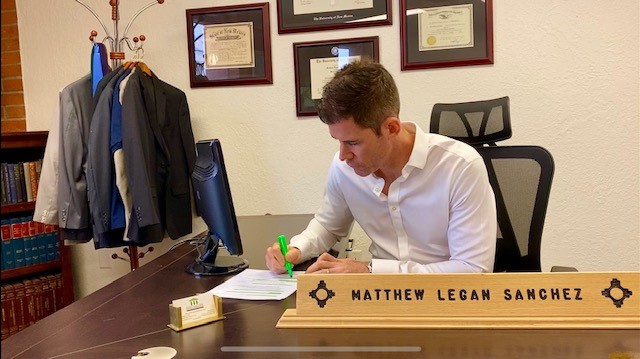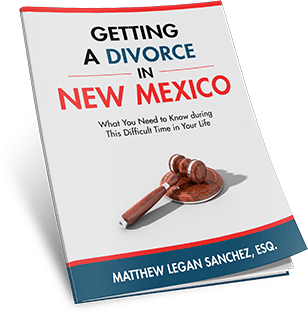
New Mexico community property laws
Dividing Property and Debt During a Divorce Case in Albuquerque, New Mexico
Every divorce involves the process of dividing assets and debts.
New Mexico does not recognize grant annulments. A marriage is either valid or invalid. For valid marriages, the parties must complete a Marital Settlement Agreement (MSA) that divides the assets and debts that were accumulated during the marriage, to be granted a divorce.
Here are the common assets that must be divided for a divorce:
Understanding How Assets are Divided in Divorce Case in New Mexico
1. Division of Assets in Divorce — Cars
Cars are probably the most common asset that is accumulated during a marriage.
New Mexico is a community property state, which means that all property accumulated during the marriage will be split 50-50 upon divorce. When a car is upside down, meaning that the debt is greater than the value, the debt will be split 50-50.
Cars that are purchased in one party’s name alone, during a marriage, are still community property. Cars that are titled in one party’s name, with the loan exclusively in one party’s name, are still considered community property when the car was purchased during the marriage.
New Mexico is a community property state that means all property accumulated during the marriage will be split 50-50 upon divorce. When a car is upside down, meaning that the debt is greater than the value, the debt will be split 50-50. Likewise, when the value exceeds the debt, the equity will be split 50-50.
A car’s value is generally determined by the Kelley Blue Book Value. The debt is established by the existing loan.
When a car financed in both parties, one party generally agrees to receive the car as their separate property, along with the existing debt. The party receiving the car generally agrees to refinance the car in their name alone, within 30-90 days from the date of divorce.
Post-divorce enforcement issues sometimes arise when the party assuming the car fails to remove the other party from the existing loan through the necessary re-finance.
2. Splitting Assets in Divorce case — Marital Homes
Homes that are purchased during the marriage are community property that is split 50-50 upon divorce case. Similar to cars, the home’s equity or debt is split between the parties.
Homes that were purchased before the marriage are considered separate property. For homes that are one party’s separate property, money earned during the marriage (community income) that is used to pay the home’s existing debt is considered community property.
In other words, the community has an interest in the separate home’s principal pay down that occurred during the marriage with community funds. See Ross v. Negron-Ross, 400 P.3d 305.
Also, homes that are purchased before the marriage can become community property through the process of transmutation, where separate property transforms into community property. Transmutation can occur when the home is gifted to the other party, the home is re-financed in both party’s name, or community funds are used to pay down or improve the home to a degree that prevents the court from “tracing” each party’s interest in the home.
In most situations, homes that were purchased during the marriage are separated in two common ways upon divorce:
- The home is sold and the equity/debt is split between the parties;
- One party keeps the home. This party re-finances the home in their name alone, buying-out the other party’s interest in the home.
3. How to Divide Assets in Divorce case — Retirement Accounts
Retirement accounts are community property and are split 50-50 upon divorce case. Common retirement accounts include:
- 401K & 401B;
- IRA;
- J-MFS Funds; and
- Public Employee Retirement Association (PERA) accounts.
Generally speaking, the community interest in the retirement account is determined by:
- The retirement’s value at the date of divorce (-) the value at the time of the marriage.
- For instance, when the value of the retirement account at the time of divorce is ($100,000) and the value at marriage is ($25,000) the community interest would be $75,000 [100,000 – 25,000 = 75,000].
For high dollar retirement accounts, one party may claim that they are entitled to the growth of the separate account (i.e. 25,000), which occurred during the marriage, due to the accounts pre-marital contributions. See Zemke v. Zemke, 116 N.M. 114; See also Burlingham v. Burlingham, 72 N.M. 433, NMSC 1963.
This “growth” argument generally occurs with high dollar accounts, because the process of “tracing” the growth can require experts (forensic accountants and/or 706 experts) that can significantly increase the divorce’s expense.
Stocks, bonds, and mutual funds are treated similar to retirement accounts. In other words, the value accumulated during the marriage is considered community property and split 50-50 upon divorce.
What Happens to Debts in New Mexico Divorce?
Any debt that is accumulated during the marriage is considered community debts and are split 50-50 upon divorce.
Common debts include:
A. Splitting Debt in Divorce case — Credit Card Debts
Credit card debt that is accumulated during the marriage is considered community and split 50-50 upon divorce case.
Community debt also includes credit card debt that is exclusively incurred in one party’s name. In other words, debt that is accumulated during the marriage, in one party’s name alone, is still considered community debt. For this reason, it is extremely important to know the debts that are being generated during the marriage.
Here are some ways to find out what debt has been accumulated during the marriage:
- Become interested in your finances;
- Ask questions and talk to your spouse about debts;
- Review financial statements;
- Review bank accounts for suspect transfers and debts; and
- Request a free credit report.
B. How to Settle Debt in Divorce — Medical Debt:
Medical debt that is accumulated during the marriage is split 50-50 upon divorce.
C. Student Loan Debt in Divorce:
Student loan debt that is generated during the marriage is considered community debt.
Student loan debt, however, is treated differently from most community debt that is split 50-50.
Generally speaking, student loan debt is considered community and split 50-50 when one is able to show that the student loan debt was used for:
- General livings expenses;
- Mortgage and/or Rent;
- Utilities;
- Bills;
- Food;
- Any item that benefits the community.
Student loan debt that is used to pay for tuition, book expenses, or other fees associated with one’s schooling is generally considered to be separate debt.
The school associated fees are considered one’s separate debt because the education benefits the individual and not the community. The education benefits the individual through increased earning potential that extends beyond the marriage.
Determining the each party’s net value:
The assets and debts above are then used to determine each party’s net value. This value is determined by each party’s share in the following:
- Equity or debt in community cars;
- Each party’s share in the community residence; and
- Each party’s share in retirement accounts and other property.
Adding up the assets gives each party a net value.
Each party’s share of debts is then determined by:
- Community credit card debt in each party’s name;
- Student loans used to benefit the community;
- Medical debt and other community debt.
Each party’s net value is then determined by taking one’s assets minus debts.
After considering the assets and debts above, let’s say hypothetically that one party has a net, community value of $500,000 and the other party has a community value of $400,000 – a difference of $100,000.
The $100,000 would then be split in half, to account for the difference (i.e. $50,000). In this scenario, the party with an extra $100,000 value would need to make an equalization payment to the other party of $50,000.
Ways to equalize differences in net value:
The process of determining the difference in each party’s assets/debts and overall net value generally occurs through:
- Amicable agreement between the couple;
- The involvement of lawyers that compare each couple’s asset/debts;
- Settlement Facilitation with a trained facilitator such as Gregg Velasquez that guides the parties to an agreement; or
- Trial on the merits where the assigned judge reviews the testimony and evidence, determining the community assets/debts and equalization payment – if necessary.
Let’s use the $50,000 hypothetical above. Assuming that one spouse owes the other spouse a $50,000 equalization payment. The equalization payment could occur through:
- The party with a $50,000 higher net value makes either a lump sum payment of $50,000, or makes monthly payments until the amount is paid;
- One party receives a greater share of retirement;
- One party receives a greater share of the home equity.
(505) SANCHEZ IS HERE TO ANSWER YOUR QUESTIONS ABOUT DIVIDING ASSETS AND DEBTS DURING A DIVORCE CASE IN ALBUQUERQUE, NEW MEXICO
Do you still have questions about dividing assets and debts during a divorce case in Albuquerque, New Mexico? Dividing assets and debts during a New Mexico divorce often require the experienced hand and knowledge that comes with years of courtroom practice. Matthew Legan Sanchez is a NM community property lawyer that can handle your division of property and debt in divorce in Albuquerque, New Mexico. Sanchez can be reached by calling (505) SANCHEZ.







